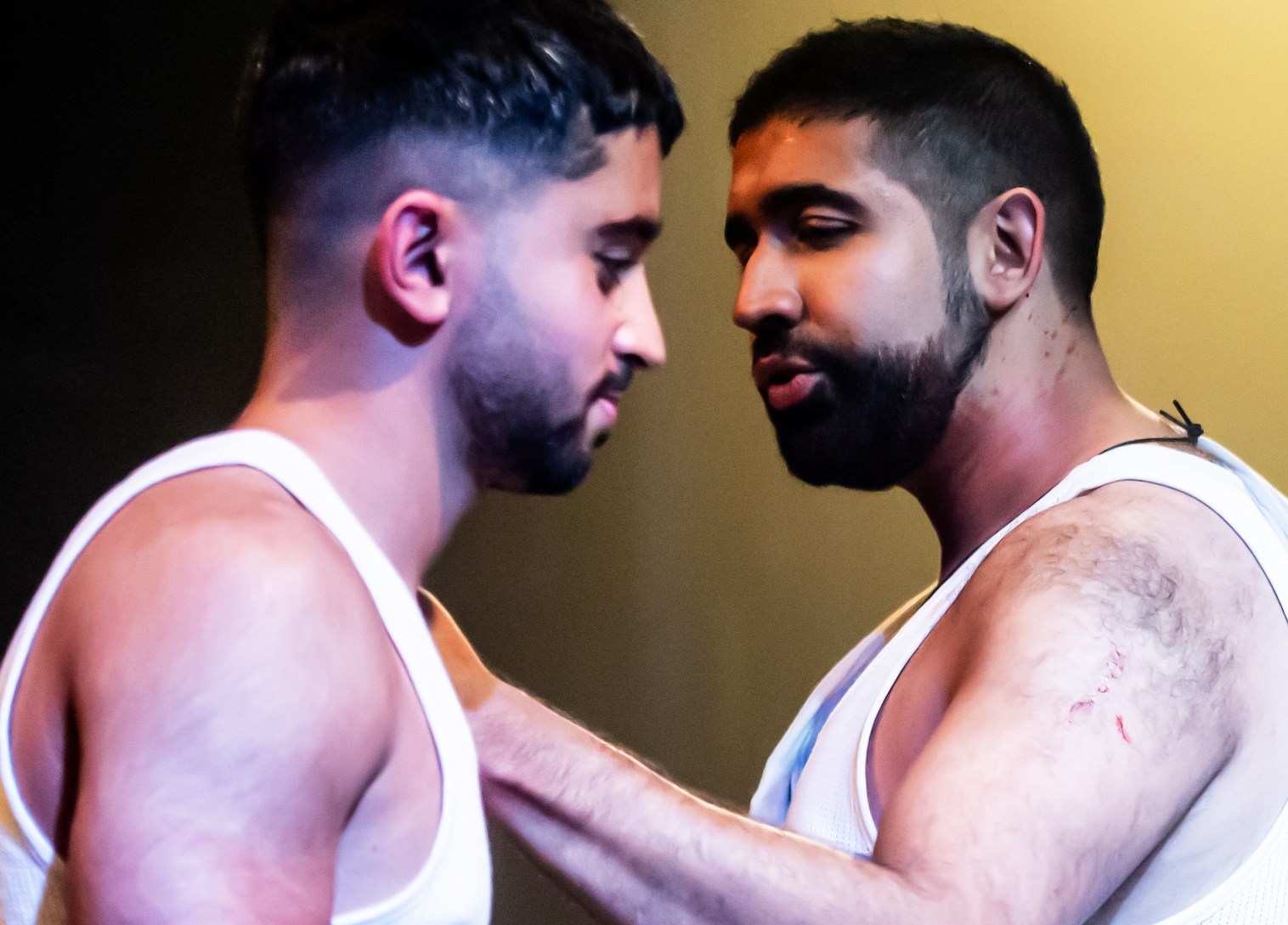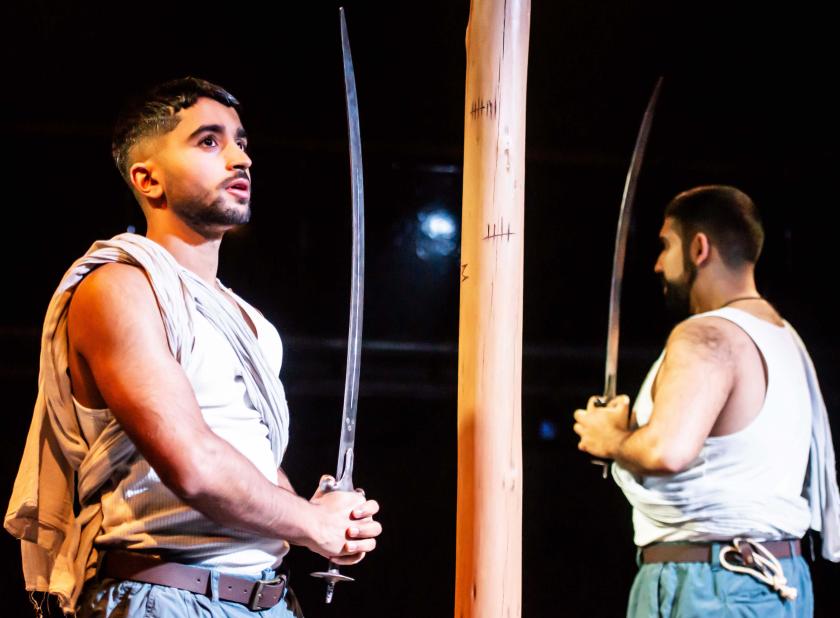It’s 1648 in Agra, and an excitable young guardsman has come up with an idea: a giant flying platform that he calls an “aeroplat”. As he might slide off it in transit, for good measure he gives it a belt to tie him down. It would be a “seat belt”, he suggests triumphantly.
This detail tells you a lot about the world the American playwright Rajiv Joseph has created in Guards at the Taj (2015). It’s a fantasy, semi-surreal, with one foot planted in the quotidian. The terrain is from a distant era that verges on mythology, a time of autocratic emperors with grand projects, though its two protagonists are almost contemporary, like bros, joshing and colloquial.
We meet them taking up their posts, curved swords in hands, outside the walls of the grandest ever Mughal project, Shah Jahan’s Taj Mahal, awaiting its unveiling when the sun rises. The pair are jittery, Babur (Usaamah Ibraheem Hussain) because he’s wired that way, a Duracell bunny of a young man, and Humayun (Maanuv Thiara) because he takes a stolid approach to his work and is aware of the gravity of their assigned role.
Humayun can recite the specific punishments they may be liable for if they don’t follow orders to the letter, or think bad things, from three days in prison for blasphemy to the ultimate price for sedition, death by elephant. His concession to nature is a love of bird-watching, and of course he can identify and name many of them. Babur is his opposite, a thinker with a butterfly mind, busy inventing flying palanquins, seeding clouds with tea and alcohol. And dreaming of naked women…
Promotion for these two might mean attending to the emperor on his visits to the harem. Babur is already planning how he would cop a peek; Humayun is all party-line gravitas – the harem is boring, he asserts, just another government department where their great leader goes to work, and eyeing up the concubines would mean death. He’s the kind of subject who can’t utter his emperor’s name without the long string of honorifics that precedes it. He reveres his betters, not so much for ideological reasons but because doing so gives him a secure job that will keep him safe, regardless of its rigours. He’s a classic company man, seemingly on-message at all times.
 The simplicity of Joseph’s plot is to pit these two stances against each other and let matters play out. Babur is determined to look at the Taj Mahal at first light, which is forbidden, but he goes unpunished. Then another light dawns: that the people who will have to amputate the hands of the Taj’s 20,000 craftsmen (a grisly part of the building’s rich mythology) so they can never build anything as beautiful again, are going to be he and Humayun. He must, as he sees it, “kill beauty”, an idea that appals him. Humayun, naturally, sees it as “doing our job”.
The simplicity of Joseph’s plot is to pit these two stances against each other and let matters play out. Babur is determined to look at the Taj Mahal at first light, which is forbidden, but he goes unpunished. Then another light dawns: that the people who will have to amputate the hands of the Taj’s 20,000 craftsmen (a grisly part of the building’s rich mythology) so they can never build anything as beautiful again, are going to be he and Humayun. He must, as he sees it, “kill beauty”, an idea that appals him. Humayun, naturally, sees it as “doing our job”.
The (unseen) grand guignol of this scenario is carefully handled, so that it becomes a black comedy, almost knockabout, as the two men clean up the blood. But the impact on them of what they have had to do is profound and triggers an even darker outcome. Pitted against each other are two motors of the men's behaviour: beauty and duty. Is there a middle way? How far should one follow the diktats of an autocrat, a question still very much on the table today.
The beauty of the piece, directed skilfully here by Adam Karim, is that it sustains its own middle line between the two friends' personalities, relishing the comedy of their differenceš as well as the tragedy that enmeshes them. Thiara and Hussain are superb, marching soberly around the dais to the next position of their watch and presenting arms with an emphatic whooshing sound, part toy soldier, part impressive traditional warrior. They project both the absurdism and the humanity of their roles. Humayun is a daddy’s boy with a rational take on the world, whose sense of the world is schematic and who believes doing dirty-work is a guarantor of promotion. Babur is a visionary who conjures a future with different emperors and different gods; in a nightmare, he has also recognised the potential of his aeroplats as dangerous flying weapons.
The staging is wonderfully simple, a tall wooden post on a grooved hexagonal dais (design by Roisin Jenner), illuminated by dramatic lighting (by Elliot Griggs) that moves through the oranges of sunrise and the dazzling white of the unveiled Taj Mahal to pitch black night, while an eerie sound design punctuates the action with discordant sitar anthems and distant cries and moans, birdsong and tiger growls. Somehow, though, the piece conjures resonances of modern-day drone warfare and hapless cannon-fodder troops, ordered up by different emperors with different gods. Another mini-marvel at the Orange Tree.















Add comment